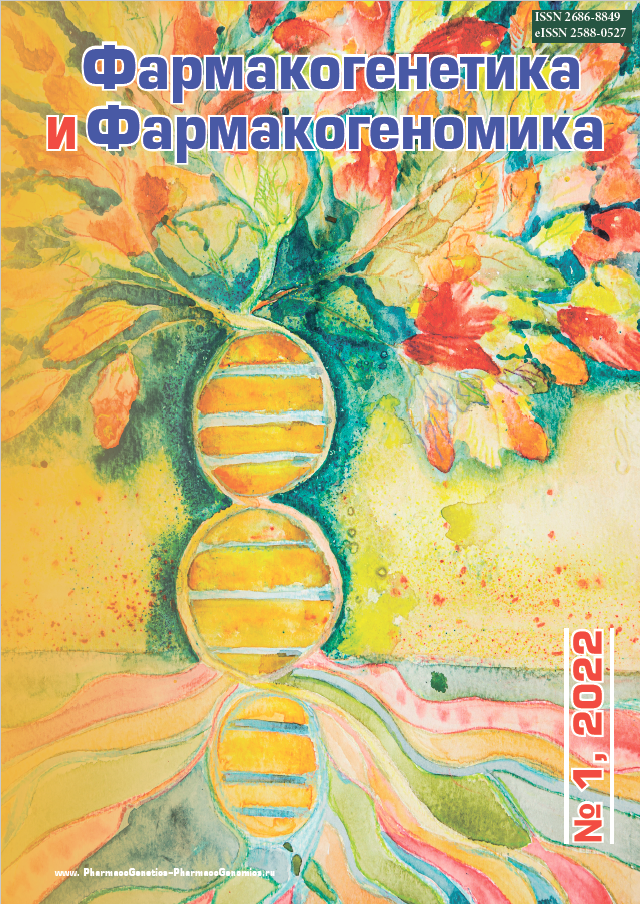
Modern Biomarkers as Tools for Patient-Centered Medicine: Pharmacogenetics and Beyond
https://doi.org/10.37489/2588-0527-2022-1-3-4
Abstract
A priority in the development of modern healthcare is patient-centered medicine, the main tool of which is the ability to predict the individual response to certain interventions, including the use of medications. This is made possible through the use of knowledge-intensive technologies that provide the detection of certain biomarkers, making it possible to obtain individual information about the patient, in order to personalize the choice and dosing regimen of drugs. The most promising for clinical practice are pharmacogenetic/pharmacogenomic, pharmacoepigenomic and pharmacometabolomic biomarkers.
About the Authors
D. A. SychevRussian Federation
Dr. Sci. (Med.), professor, Corresponding Member RAS, Rector,
Head Department of the Clinical Pharmacology and Therapy
named after academician B. E. Votchal
Moscow
B. I. Kantemirova
Russian Federation
Dr. Sci. (Med.), professor of the Department of Pharmacology
Astrakhan
References
1. Sacristán JA. Patient-centered medicine and patient-oriented research: improving health outcomes for individual patients. BMC Med Inform Decis Mak. 2013 Jan 8;13:6. DOI: 10.1186/1472-6947-13-6
2. Sychev DA. “Multiomic” Studies as a Promising Clinical Pharmacological Tool for Personalization of Socially Significant Diseases Pharmacotherapy in Russia. Personalized Psychiatry and Neurology. 2022;2(2):1–2. DOI: 10.52667/2712-9179-2022-2-2-1-2
3. Ашихмин Я. И. Трансляционная медицина: новая надежда или коварный замысел фармацевтической промышленности? Фармакогенетика и фармакогеномика. 2015;(1):40–44. [Ashikhmin YI. Translational medicine: new hope or artful design of big pharma? Pharmacogenetics and Pharmacogenomics. 2015;(1):40–44. (In Russ).].
Review
For citations:
Sychev D.A., Kantemirova B.I. Modern Biomarkers as Tools for Patient-Centered Medicine: Pharmacogenetics and Beyond. Pharmacogenetics and Pharmacogenomics. 2022;(1):3-5. (In Russ.) https://doi.org/10.37489/2588-0527-2022-1-3-4










































